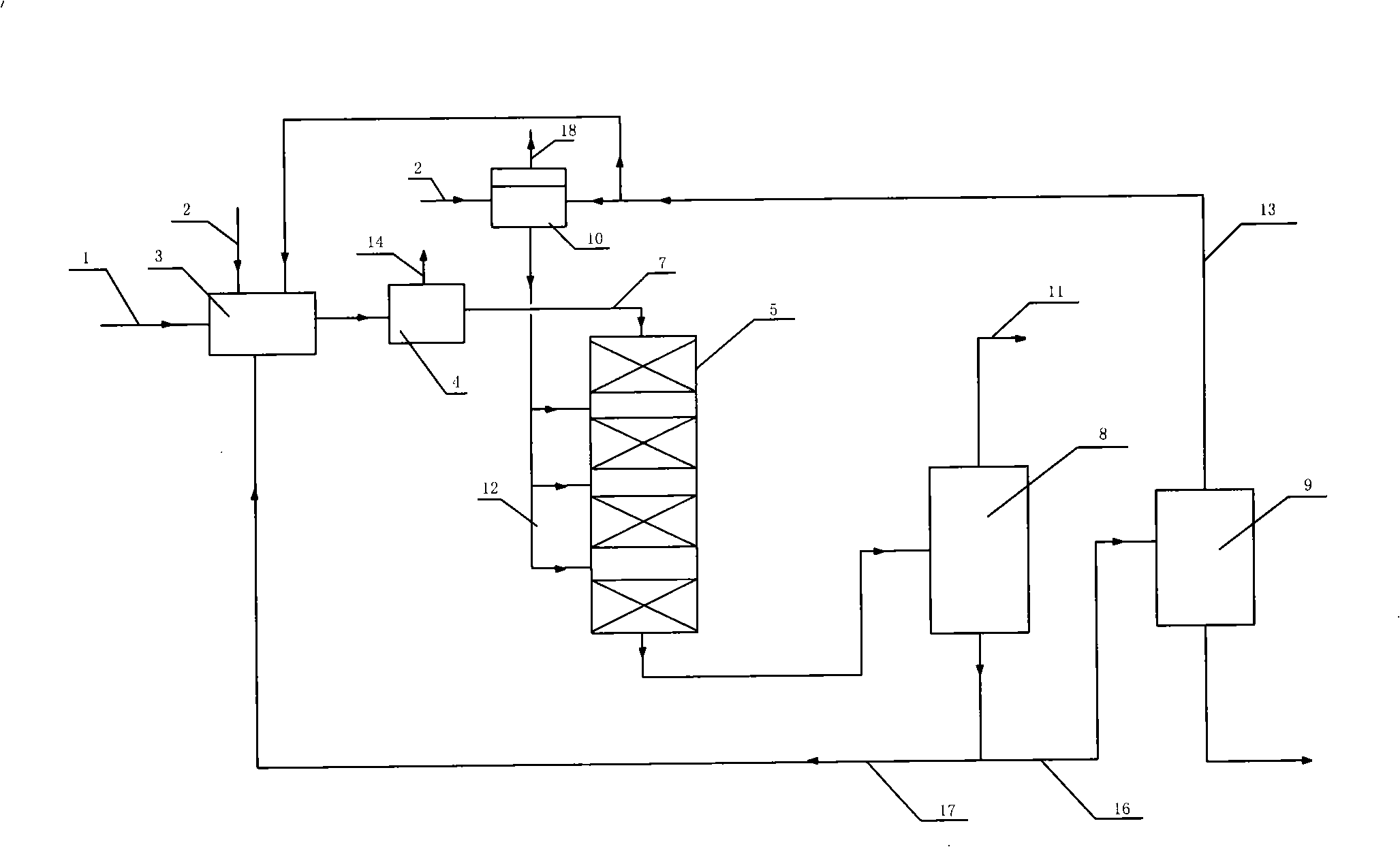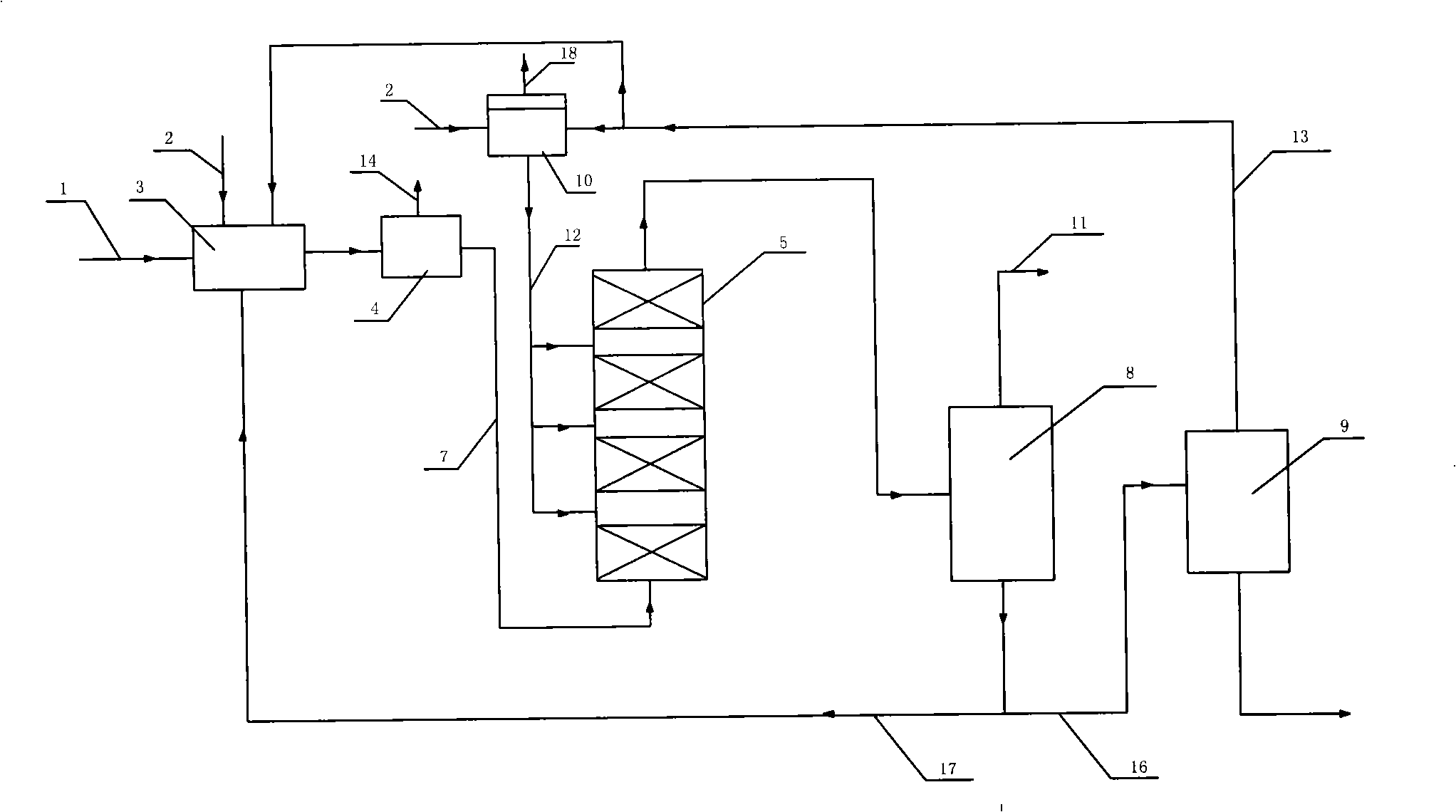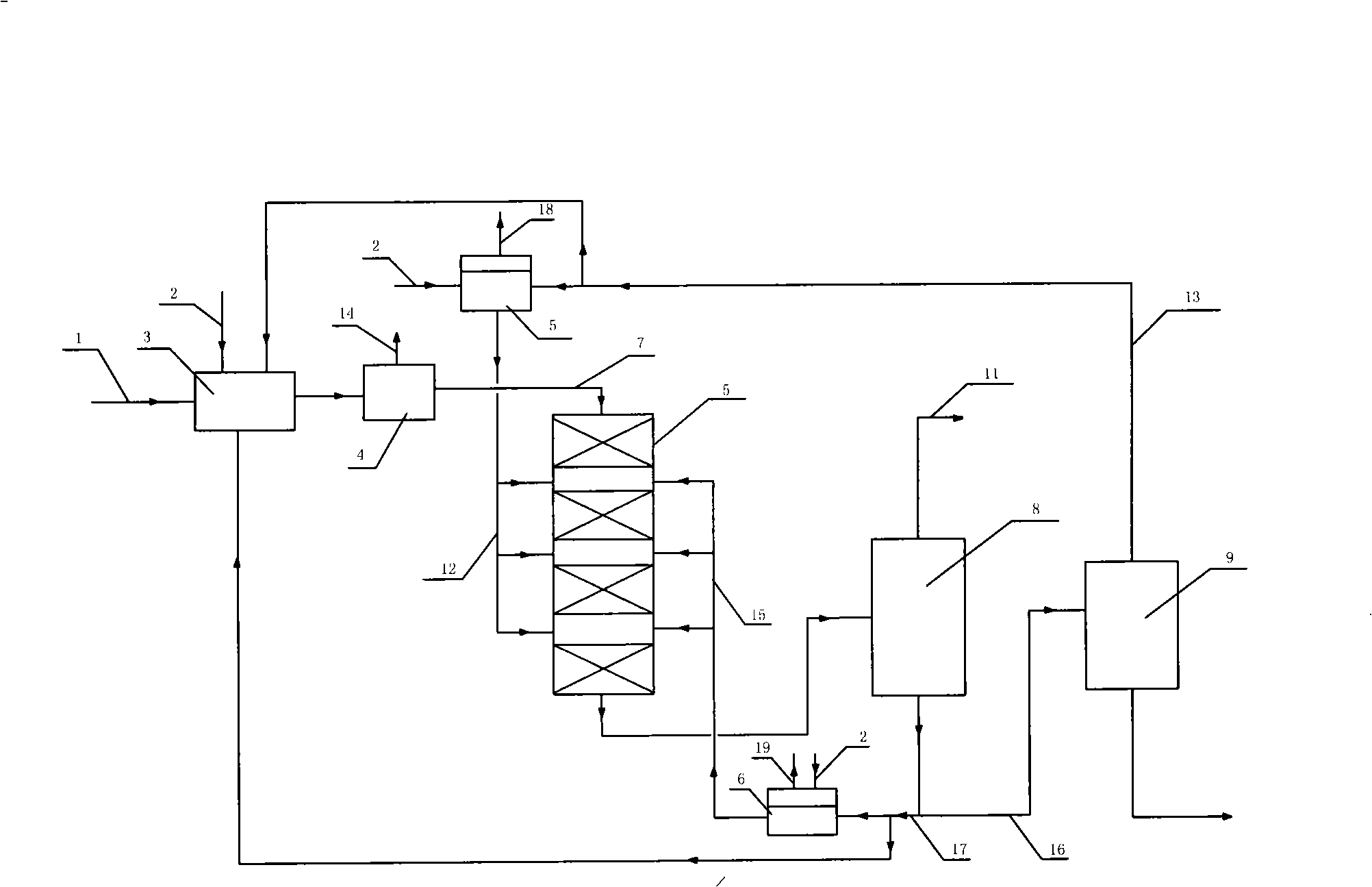Two-phase hydrogenation process
A technology of addition and hydrogen, applied in the field of hydrogenation of hydrocarbon oil, can solve the problems of reducing the mass transfer and reaction speed and intensity of fresh feed oil and hydrogen, so as to facilitate hydrofining and hydrocracking reactions and inhibit condensation reactions Effect
- Summary
- Abstract
- Description
- Claims
- Application Information
AI Technical Summary
Problems solved by technology
Method used
Image
Examples
Embodiment Construction
[0073] Such as figure 1 As shown, the reactor shown in the figure is a four-stage catalyst bed. Fresh raw oil 1 is mixed with hydrogen gas 2 and cycle oil 17 in the first mixer 3 in the presence of part of the solvent or diluent 13, and the mixture flow enters the separation tank 4, and the waste gas 14 of the separation tank is separated and becomes the reactor feed 7. Reactor feed 7 enters the catalyst bed in the first stage of the reactor from the top of reactor 5 to contact with the catalyst for reaction, and another part of solvent or diluent 13 is mixed with hydrogen 2 in the third mixer 10 and discharged from the third mixer Exhaust gas 18, hydrogen-dissolving solvent or diluent 12 respectively from the catalyst bed of the first section and the second section, the catalyst bed of the second section and the third section, and between the catalyst bed of the third section and the fourth section of the reactor 5 Enter the reactor 5, the reaction effluent coming out from t...
PUM
 Login to View More
Login to View More Abstract
Description
Claims
Application Information
 Login to View More
Login to View More - R&D
- Intellectual Property
- Life Sciences
- Materials
- Tech Scout
- Unparalleled Data Quality
- Higher Quality Content
- 60% Fewer Hallucinations
Browse by: Latest US Patents, China's latest patents, Technical Efficacy Thesaurus, Application Domain, Technology Topic, Popular Technical Reports.
© 2025 PatSnap. All rights reserved.Legal|Privacy policy|Modern Slavery Act Transparency Statement|Sitemap|About US| Contact US: help@patsnap.com



